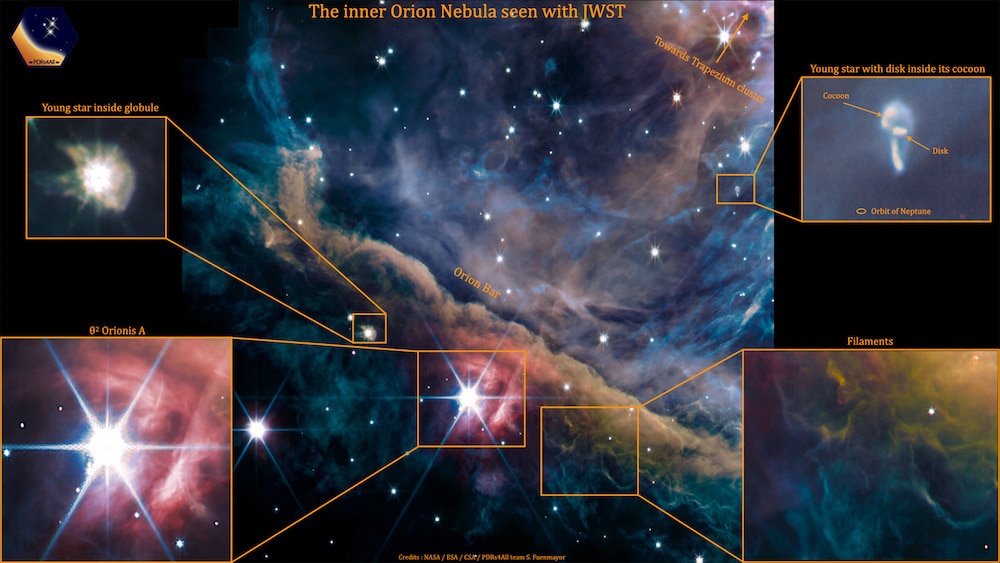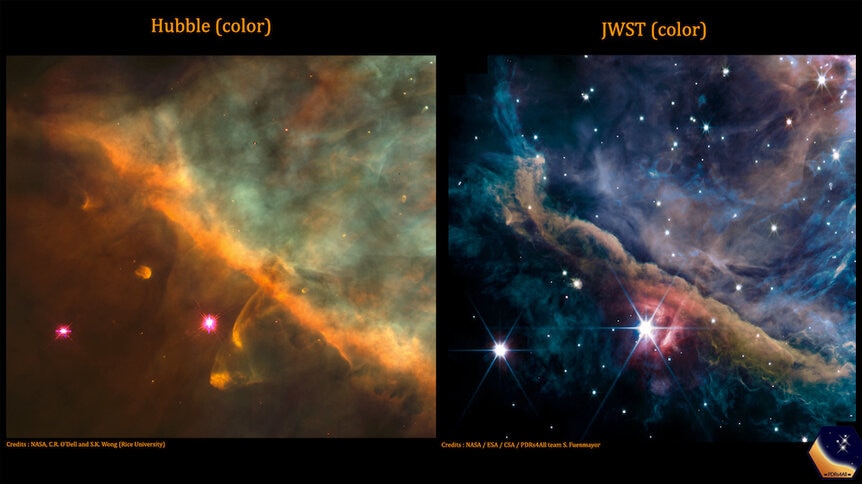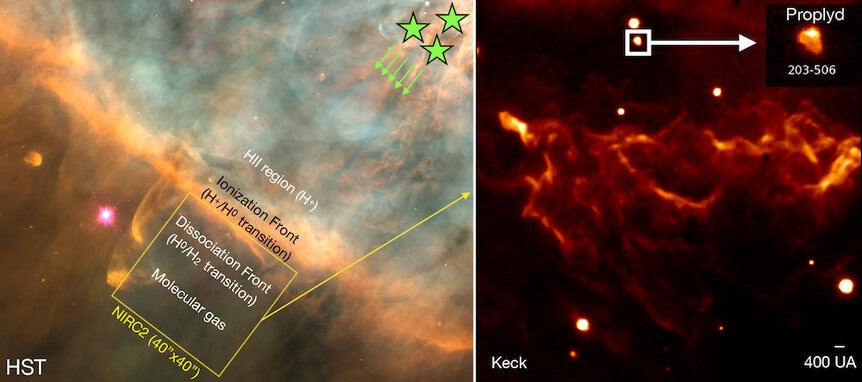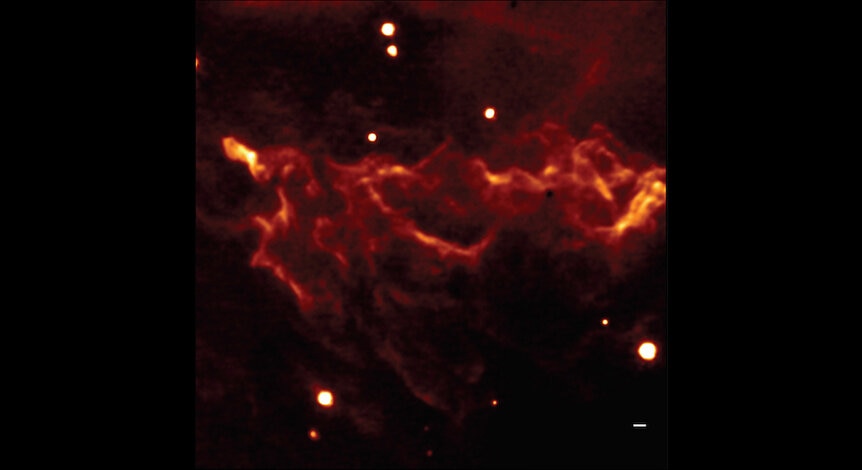Create a free profile to get unlimited access to exclusive videos, sweepstakes, and more!
Keck and JWST team up to watch as massive stars blast away gas in the Orion Nebula
The Orion Bar is one place you don’t want to hang out.

One of the most truly spectacular objects in the entire sky is the celebrated Orion Nebula, a star-birth factory 1,300 light-years from Earth. It's so bright that it can be seen with the naked eye; it looks like a star, the middle of three that form Orion's "dagger" that hangs down from his Belt. With a telescope it reveals itself to be a brilliant and colorful display of hot gas a couple of dozen light-years across.
But our view of it is changing, because it’s eating itself up from the inside out. The question is, will this process destroy the gas and starve stars of building material, or will it help trigger the formation of new stars?
To find out more, a team of astronomers used both the ground-based 10-meter Keck telescope with a near-infrared camera and the space observatory JWST to observe the Orion Nebula, the closest site of massive star formation to the Sun. It’s actually a small part of the much larger Orion Molecular Cloud, a cold, dense, and dark cloud of gas.
They want to examine the process of stellar feedback. In the center of the nebula are several recently created big stars, including the beast Theta1 Ori C, a binary system where one star has 11 times the mass of the Sun and the other 33. That bigger one blasts out 200,000 times as much energy as the Sun! That radiation is intense, and is heating and eroding the molecular gas around it. The cooler gas in the molecular cloud is made mostly of hydrogen molecules, two attached hydrogen atoms. But the ultraviolet light from Theta1 Ori C blasts them apart, creating neutral hydrogen atoms. It also ionizes those atoms, profoundly changing how they behave. This is carving a growing cavity around the stars with Theta1 Ori C at the center, like a worm eating its way out of an apple from the center outwards.
This makes it much harder for stars to form in the nebula. But, this process also drives intense waves of pressure into the gas, which can compress it and cause more stars to be born.
So stars born in the nebula affect that nebular gas — that’s the stellar feedback bit — but which wins? The forces of creation or destruction?
As Theta1 Ori C eats away at the material around it, it creates a roughly spherical wall around it. We see one part of that wall edge-on so it looks more like a line, called the Orion Bar. This is what the astronomers targeted and obtained the highest-resolution near-infrared images of it ever taken.
What they saw is chaos. As light from the star slams into the denser material the gas is heated and flows away toward the star — this is like mist rising from a warm puddle of water as it’s heated by the Sun. Over time the gas becomes layered: On the outside of the bar — farther from Theta1 Ori C and the cavity center — is the cold, dense, molecular gas; closer to the center the gas is blown apart into atoms by the light — called photodissociation — and closer to the center yet those atoms are ionized. The borders between these layers are called fronts, so there’s a photodissociation front and an ionization front.
They found that the two fronts are very close together, separated by only 750 billion kilometers or so. That’s less than a tenth of a light-year, which is a short distance compared to the 25 light-year-wide cavity making up the Orion Nebula.
The densest part of the region is along the photodissociation front, where the gas is being heated and compressed. That creates a lot of pressure inside the gas, causing it to expand. It can’t expand well into the dense gas behind it, so it moves toward the star, flowing toward it along a vast plane. This creates ridges and filaments of gas, long thin structures. These tend to lie parallel to the fronts, and are very narrow indeed, just 50 – 100 billion kilometers or so thick.
They also found knots, also called globules, of very dense gas embedded in the less dense material. That’s expected, since lower density gas will erode away more rapidly than denser material. Some of those globules are where stars are being born, the gas collapsing down and feeding nascent stars. In fact they may have found protostars, stars in the earliest stages of formation, in some of these globules.
Just above the ionization front, those globules get blasted by the starlight. Eroding away, they form long, comet-like tails as the gas flows around them, and we call these protoplanetary disks, or proplyds. Two of these were seen in their observations, so the astronomers will be able to study just how the light affects these forming stars in detail.
Much of these observations confirm and extend previous observations, showing us how stars affect their environment once they form. The details of star formation and stellar feedback are still being learned, but these observations and ones coming up soon will give us a huge boost in understanding this fiercely complex — and quite beautiful — process.






























